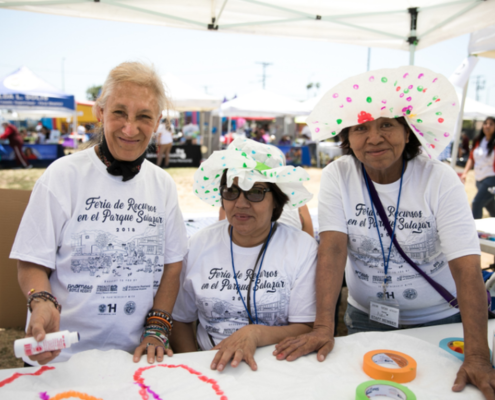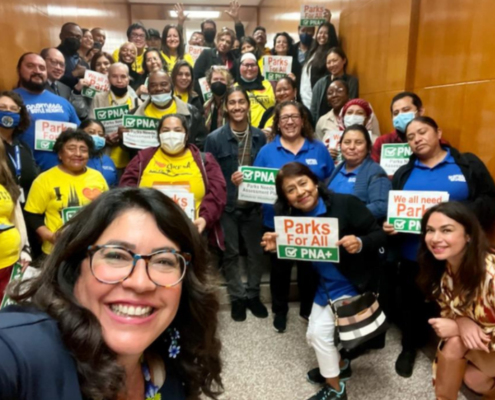Healthy Built Environment
More public investments are needed for connecting BIPOC Californians to healthy food access, affordable housing and a safe environment, leading to healthier communities.


Why Health Built Environment matters for racial equity:
Public investments in the built environment often leave out low-income communities of color, where they lack access to transit, green space, healthy food, and other environmental resources. Historically, White suburban development has been prioritized as densely populated inner-city infrastructure was defunded. This increased geographic segregation and exacerbated unequal public federal, state, and local investments for communities of color. As a result, Californians of color often live in communities with poor environmental conditions and few amenities. These poor conditions limit economic opportunity and residents at higher risk for negative health outcomes.

What we find:
The data show that Californians of color face disparities across multiple built environment indicators. Communities of color are particularly vulnerable to climate-change-related disasters and emergencies and have the least resources to withstand its impacts. Harmful impacts to our current environment stem from settler colonialism, racialized land use policies including redlining, polluting industries, labor exploitation, and a society organized around consumption. While communities of color experience environmental harms, corporate owners, many of them White, extract wealth and benefit financially. This is problematic because of increased local temperatures since roads, parking lots, and other concrete or paved surfaces absorb and reemit more solar heat than grass, trees, and other natural surfaces.
Key Takeaways.
Healthy Built Environment
Learn More about our Methodology
Policy levers:
While changing the built environment can be a slow process, organizers and advocates are working tirelessly to achieve meaningful reform—such as ending fracking and oil drilling, closing facilities that release toxins in low-income communities of color, and increasing the use of green energy to reduce greenhouse gas emissions. Other significant advocacy efforts focus on land use policy to promote healthy communities, including safe, healthy, affordable housing, parks, public transportation and green space while pushing for shifts in investments away from suppression and criminalization.
Put Data to Use
Learn how you can take action to eliminate racial disparity and use RACE COUNTS data to advance social justice.
Take Action